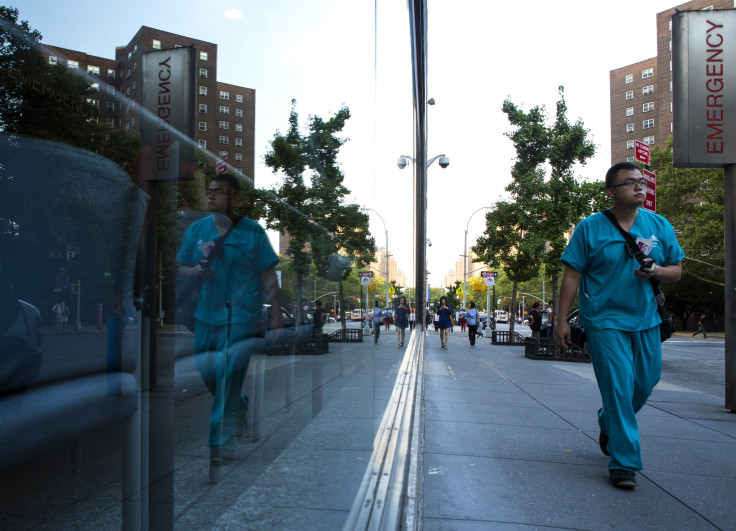Ebola NYC 2014: How Long Can The Virus Live Outside The Body?

Dr. Craig Spencer, New York City’s first Ebola patient who recently returned from Guinea, contacted health officials at the first sign of infection on Thursday, but not before he visited his apartment in Harlem, walked the city’s High Line, rode on the subway system, went bowling in Williamsburg and took an Uber (the increasingly popular ride-sharing service that allows people to book rides via their smartphones). How many New Yorkers were in contact with Spencer is unclear, however, health officials maintain there is hardly reason to fear a citywide spread of the disease given that patients are contagious only when symptoms occur.
But what about after symptoms set in? How long can Ebola survive outside of the human body after a patient sneezes or bleeds onto a surface? Ebola is transmitted from one host to the next through the body fluids (blood, saliva, sweat, vomit, urine, feces, etc.) of an infected person. How long the Ebola virus can live outside of its host depends on the kind of body fluid that contains it and what the environmental conditions are like. In small amounts and on dry surfaces such as doorknobs and countertops -- or subway handrails, for that matter -- Ebola can survive for several hours, according to the Centers for Disease Control and Prevention.
It can take several days, however, for the virus to die off in body fluids that are kept at room temperature. At low temperatures -- specifically, those below 4 degrees Celsius, or about 39 degrees Fahrenheit -- the virus has reportedly survived for several weeks in blood and on contaminated surfaces, according to the Public Health Agency of Canada. One study found that Ebola that has dried onto glass, rubber or painted aluminum can survive in the dark for several hours in relatively average conditions, defined as an environment with 30 to 40 percent humidity that is between 20 degrees and 25 degrees Celsius (68 degrees and 77 degrees Fahrenheit.)
The fear of the virus going airborne has remained a legitimate concern, but health officials have insisted that the virus cannot be transmitted without direct contact with the body fluids of an infected person. Unlike measles or chickenpox, which can be passed on through coughing or sneezing that results in particles of the virus becoming suspended in the air, the Ebola virus requires direct contact with fluids in order to travel. A person who comes into contact with the blood or saliva of an Ebola patient would have to touch his or her eyes, nose or mouth, or an open cut, wound or abrasion, in order to contract the virus, the CDC says.
It is extremely unlikely, if not impossible, that anyone who rode the same train as Spencer or used the same bowling ball as he would catch the virus. "He is a committed and responsible physician who always puts his patients first," Columbia Presbyterian Hospital in Manhattan, where Spencer works, said in a statement about the doctor. "He has not been to work at our hospital and has not seen any patients at our hospital since his return from overseas. Our thoughts are with him, and we wish him all the best at this time."
© Copyright IBTimes 2025. All rights reserved.






















